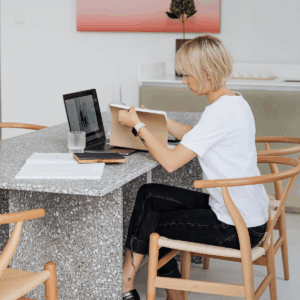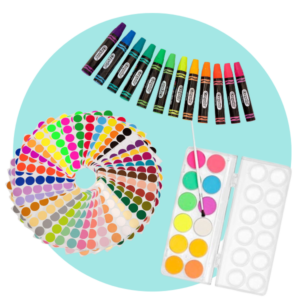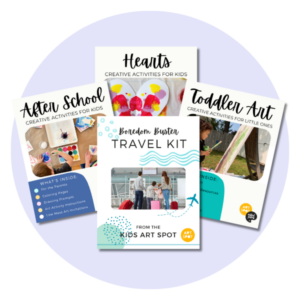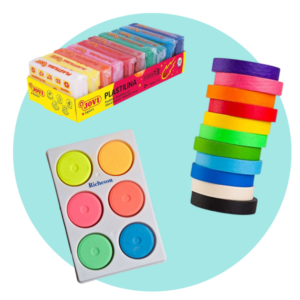There’s this moment that happens most afternoons in my house around 2:30. Milo’s finally down for his nap, Ellie’s doing puzzles at the table, and I’m standing at the kitchen counter thinking about how badly I want to crawl into bed myself.
Some days I power through. Other days? I’m basically a zombie until Matt gets home.
But here’s what I’ve noticed over the past year or so: the afternoons when I feel energized enough to actually engage with my kids, maybe even tackle that pile of laundry or work on an article—those days almost always started differently in the morning.
So after paying attention to my own patterns and doing some reading, I’ve identified seven morning habits that seem to make all the difference between ending up face-down in exhaustion or actually having energy to spare when the afternoon rolls around.
1) They actually drink water before coffee
I used to make a beeline straight for the coffee pot the second I woke up at 6 AM. Coffee first, everything else later.
Then I read about how our bodies lose water overnight through breathing and sweating, leaving us mildly dehydrated by morning. And that dehydration? It’s one of those sneaky energy thieves that we don’t even recognize.
Now I keep a glass of water on my nightstand. Before my feet hit the floor, I drink it. Then I go make my coffee.
It sounds almost too simple to matter, but I swear the difference is real. That first glass of water seems to wake up my system in a way that coffee alone never did. My head feels clearer, and I don’t get that mid-morning crash that used to send me reaching for a second cup.
The key is making it easy on yourself. Room temperature water is gentler on your system first thing in the morning than ice cold. Sometimes I add a squeeze of lemon from the tree in our backyard for a little vitamin C boost.
2) They move their bodies (even just a little)
When Ellie was a baby, I used to think exercise had to mean a full workout at the gym or it didn’t count. Now I know better.
The people who maintain steady energy throughout the day aren’t necessarily doing intense boot camps at 5 AM. They’re just moving. A walk around the block. Some gentle stretches. Maybe yoga in the living room while the kids watch from the couch.
Related Stories from The Artful Parent
Most mornings, weather permitting, I try to get outside with both kids after breakfast. We might walk to the farmers’ market on Saturdays, or just wander around our neighborhood looking for interesting leaves and rocks. Ellie loves collecting things, and Milo’s happy as long as he can toddle along at his own pace.
Studies suggest that morning movement improves blood flow and helps prevent that afternoon energy crash. Even ten minutes makes a difference.
The trick is finding what works for your life. Maybe it’s parking farther away at the grocery store. Maybe it’s dancing in the kitchen while making breakfast. Movement doesn’t have to look a certain way—it just has to happen.
3) They eat protein at breakfast
Here’s something I learned the hard way: starting your day with just toast or a muffin sets you up for an energy crash later.
I used to grab whatever was fastest, which usually meant carb-heavy foods that tasted good but left me starving and irritable by 10 AM. Then I’d overeat at lunch, spike my blood sugar, and spend the afternoon fighting to keep my eyes open.
Now breakfast almost always includes protein. Scrambled eggs are our go-to most mornings because they’re quick and the kids will actually eat them. On busier days, I make overnight oats the night before with Greek yogurt mixed in, topped with walnuts and berries from the farmers’ market.
- People who were forced to clean their plate as kids usually display these 8 unhealthy patterns as adults - Global English Editing
- My family doesn’t say “I love you,” but we show it in the strangest ways - Global English Editing
- 10 things that were completely normal in the 60s and 70s that traumatized an entire generation - Global English Editing
The difference is honestly dramatic. When I eat protein in the morning, my energy stays more level throughout the day. I don’t get those desperate hunger pangs, and I’m not reaching for sugary snacks by mid-afternoon.
As Dr. Kristen Kern, a registered dietitian, explains, “Foods that include protein, fiber and healthy fats keep your blood sugar stable and help you avoid the mid-afternoon crash.”
4) They don’t immediately check their phones
This one still trips me up sometimes. My phone sits on the dresser across the room (I learned to keep it out of arm’s reach), and some mornings my first instinct is still to grab it and scroll through emails or messages.
But on the mornings when I resist that urge—when I give myself even just fifteen minutes before diving into the digital world—the whole day feels different. Calmer somehow. More intentional.
There’s actually psychology behind this. When we immediately check our phones upon waking, we flood our brains with other people’s needs and problems before we’ve even had a chance to check in with ourselves. It triggers stress hormones right off the bat.
Instead, I try to use those first few minutes for something grounding. Sometimes it’s just sitting with my coffee while the house is still quiet. Sometimes I open the windows and take a few deep breaths. Other mornings, if I’m lucky, I get to read a few pages of whatever book is on my nightstand before the kids wake up.
The point isn’t to never check your phone. It’s just about giving yourself a buffer—some space to ease into your day rather than being immediately pulled in ten different directions.
5) They get natural light exposure early
One of the best changes I’ve made is opening our curtains and windows first thing in the morning, even before I’ve fully woken up.
Natural light exposure early in the day helps regulate our circadian rhythm—that internal clock that tells our body when to feel alert and when to feel sleepy. When we get bright light in the morning, it signals to our brain that it’s time to be awake and suppresses the production of melatonin.
Most mornings, after breakfast, we head outside for at least a few minutes. Even on days when we’re rushing, I make sure the kids and I spend a bit of time in the backyard or on the front porch.
This habit has been especially helpful during the shorter days of fall and winter. I notice a real difference in my mood and energy when I’m intentional about getting outside early, even if it’s just to check on the garden or sit on the porch steps while Milo climbs around.
If you can’t get outside first thing, at least position yourself near a window while you have your morning coffee or breakfast. Your body will thank you later when 3 PM rolls around and you’re not fighting to stay awake.
6) They have a consistent wake-up time
I know, I know—this one doesn’t sound fun. Especially on weekends when sleeping in feels like a sacred right.
But here’s the thing: people who maintain steady energy throughout the day tend to wake up around the same time every morning, even on their days off. And while I’m not perfect at this (because who is?), I’ve noticed that when I do stick to a consistent wake time, everything else seems to fall into place more easily.
My body knows what to expect. I fall asleep more easily at night. I don’t spend the first hour of my day feeling groggy and disoriented.
Research supports this too. Studies show that people with consistent sleep schedules have more energy than those with irregular schedules, and they tend to accumulate less sleep debt over time.
I aim to wake up at 6 AM most days, which gives me at least thirty minutes to myself before the kids are up. Some mornings I use that time to write. Other mornings I just sit with my coffee and stare out the window. Either way, it’s mine.
Even on weekends, I try not to sleep past 7 AM. Matt thinks I’m slightly crazy for this, but I’ve found it’s worth it for how much better I feel overall.
7) They avoid decision fatigue in the morning
The final habit I’ve noticed in people who never seem to hit that afternoon wall? They’ve simplified their mornings by making fewer decisions.
This might mean laying out clothes the night before, meal prepping breakfast options, or having a set morning routine that doesn’t require much thought.
For me, this looks like keeping breakfast simple and repetitive. During the week, it’s almost always eggs or overnight oats. The kids’ clothes are picked out the night before. The coffee pot is prepped and ready to go.
I learned this trick after too many mornings spent standing in front of my closet feeling overwhelmed, or staring into the fridge trying to figure out what to make for breakfast while two hungry kids whined at my feet.
When you eliminate unnecessary decisions from your morning routine, you free up mental energy for the things that actually matter. You’re not draining your reserves before 9 AM on questions like “what should I wear?” or “what should we eat?”
Save your decision-making power for the afternoon when you’ll need it more. Your morning self will thank you, and so will your 3 PM self.
Final thoughts
Look, I’m not saying I nail all seven of these habits every single day. Some mornings Milo wakes up at 5 AM and throws the whole rhythm off. Other mornings I just really, really want that extra fifteen minutes of sleep more than I want to drink water or move my body.
And that’s okay.
The goal isn’t perfection. It’s just progress. It’s noticing what makes you feel better and trying to do more of that.
What I’ve learned is that afternoon energy isn’t some magical thing that certain lucky people just have. It’s built in the morning through small, intentional habits that add up over time.
Start with one. Maybe it’s the water thing, or the morning light, or just setting a consistent wake-up time. See how it feels. Give yourself a few weeks to adjust.
Then, when you’re ready, add another.
Before you know it, you might find yourself at 3 PM wondering why you’re not exhausted—and realizing it’s because you set yourself up for success eight hours earlier.










